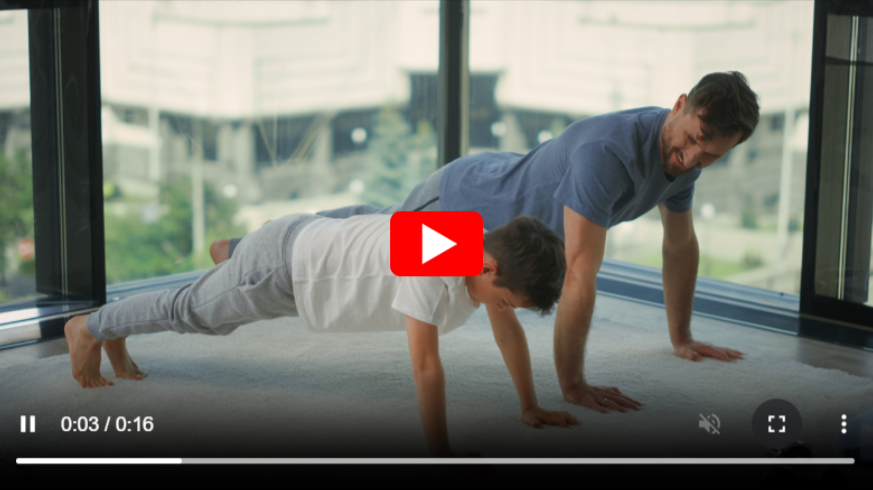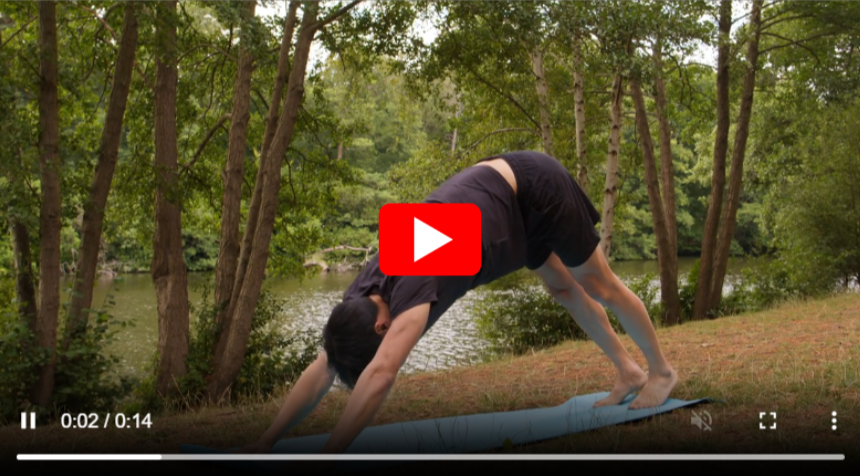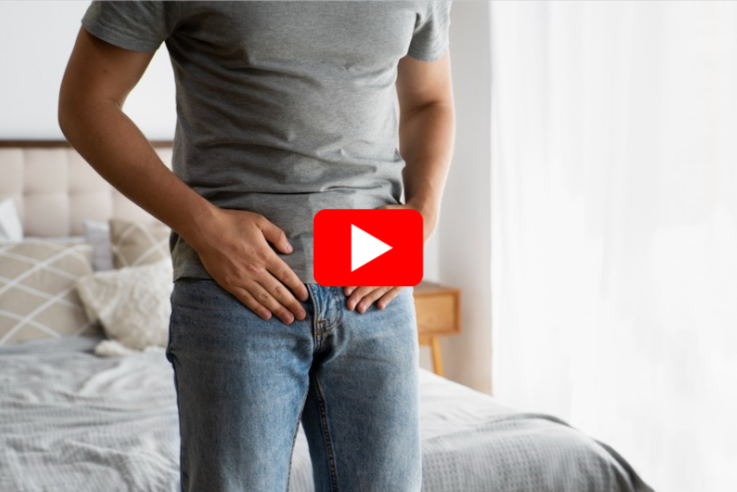Kegel Exercises for Men: Boost Prostate & Pelvic Health
Contents
- 1 What Are Kegel Exercises?
- 2 Why Are Kegel Exercises Important for Men?
- 3 The Anatomy of the Male Pelvic Floor
- 4 How to Identify Your Pelvic Floor Muscles
- 5 Step-by-Step Guide to Performing Kegel Exercises for Men
- 6 Tips for Success with Kegels
- 7 When Should Men Start Doing Kegel Exercises?
- 8 The Science Behind Kegel Exercises and Prostate Health
- 9 Kegels vs. Other Treatments for Prostate Health
- 10 Combining Kegels with a Prostate-Healthy Lifestyle
- 11 Signs Your Kegels Are Working
- 12 Common Mistakes to Avoid
- 13 Kegel Devices for Men
- 14 Professional Guidance and Support
- 15 Final Thoughts: Kegels Are a Game-Changer for Prostate Health
Prostate health is a critical component of a man’s overall well-being, especially as he ages.
While much of the focus around prostate health revolves around medical treatments, supplements, and lifestyle adjustments, one highly effective yet often overlooked practice is the use of Kegel exercises for men.
Originally popularized for women’s pelvic floor rehabilitation, Kegel exercises have immense benefits for men, particularly for improving prostate function, urinary control, and sexual health.
Kegel exercises for men strengthen pelvic floor muscles, support prostate health, improve bladder control, and enhance sexual performance naturally.
In this comprehensive guide, we’ll explore the vital connection between Kegel exercises and prostate health, how to perform them correctly, and what men can expect from making these exercises part of their daily routine.
What Are Kegel Exercises?
Kegel exercises are simple yet effective movements designed to strengthen the pelvic floor muscles—the group of muscles that support the bladder, rectum, and sexual organs.
For men, these exercises particularly target the pubococcyx (PC) muscle, which plays a crucial role in urinary and sexual function.
While many men associate pelvic floor exercises with women, they are just as important for men, especially those dealing with prostate issues, erectile dysfunction, or urinary incontinence.
Why Are Kegel Exercises Important for Men?
Kegel exercises have been proven to provide several benefits for male pelvic health, including:
Prostate Support
The prostate gland is located just below the bladder and in front of the rectum, surrounding the urethra. As men age, the prostate tends to enlarge, a condition known as benign prostatic hyperplasia (BPH).
An enlarged prostate can cause urinary difficulties such as frequent urination, weak flow, and incomplete bladder emptying.
Strengthening the pelvic floor through Kegels can relieve pressure on the prostate and urethra, improving urine flow and supporting better prostate health overall.
Improved Urinary Control
Urinary incontinence is a common side effect after prostate surgery (especially prostatectomy). Kegel exercises help regain bladder control by strengthening the muscles responsible for opening and closing the urethra.
Enhanced Sexual Health
Kegels can enhance erectile function and even help delay premature ejaculation. Strengthening the pelvic floor improves blood flow and muscle control, which are vital for maintaining and sustaining erections.
Post-Prostate Surgery Recovery
Men who have undergone prostate surgery often experience urinary leakage and weakened pelvic support. Kegel exercises can speed up the recovery process by restoring muscle tone and function in the pelvic area.
The Anatomy of the Male Pelvic Floor
To understand the effectiveness of Kegel exercises for men’s prostate health, it’s helpful to understand the structure of the pelvic floor.
The male pelvic floor includes:
- Pubococcygeus (PC) muscle
- Bulbocavernosus muscle – helps with erections and ejaculation
- Ischiocavernosus muscle – maintains blood flow to the penis
- Levator ani – supports pelvic organs and assists with urinary control
These muscles act like a sling to support the bladder and rectum and are directly involved in urinary and sexual function.
Weakness in any of these areas can contribute to problems such as erectile dysfunction, incontinence, or incomplete emptying of the bladder.
How to Identify Your Pelvic Floor Muscles
Before jumping into a Kegel routine, it’s essential to identify the right muscles.
Technique 1: Stop Urine Mid-Flow
The easiest way to find your pelvic floor muscles is by trying to stop urinating midstream. The muscles you use to do this are your pelvic floor muscles. Once you’ve identified this sensation, you can contract these muscles even when you’re not urinating.
Note: Don’t make it a habit to stop urination regularly as a form of exercise—it’s just a one-time method for identification.
Technique 2: Lift the Scrotum and Penis
Another technique is to try lifting your scrotum and pulling in your anus without tightening your abs or buttocks. That lift and squeeze is your pelvic floor muscle at work.
Step-by-Step Guide to Performing Kegel Exercises for Men
Here’s a simple way to incorporate Kegel exercises into your daily routine:
Step 1: Find a Comfortable Position
Start lying down on your back with your knees bent or sitting comfortably in a chair. This removes pressure and helps you focus on the correct muscles.
Step 2: Contract the Pelvic Floor Muscles
Squeeze the muscles you use to stop urinating or prevent gas from escaping. Avoid tightening your thighs, buttocks, or abdomen.
Step 3: Hold the Contraction
Hold the squeeze for 3 to 5 seconds.
Step 4: Release and Rest
Relax for 3 to 5 seconds before repeating.
Step 5: Repeat
Aim for 10 to 15 repetitions per session, and try to do three sessions per day (morning, afternoon, and night).
As your muscles get stronger, you can gradually increase the hold time up to 10 seconds.
Tips for Success with Kegels
- Breathe Normally: Don’t hold your breath while performing the exercise.
- Consistency Is Key: Like any workout, results come from regular practice.
- Don’t Overdo It: Overworking the muscles can lead to fatigue and reduced effectiveness.
- Track Progress: You might start seeing improvements in urinary control and erections after a few weeks of consistent practice.
When Should Men Start Doing Kegel Exercises?
Men of all ages can benefit from pelvic floor training, but they are especially useful if you:
- Are over 40 and want to maintain urinary and sexual health
- Have an enlarged prostate
- Are you recovering from prostate surgery
- Experience urine leakage or incontinence
- Want to improve erectile performance or stamina
The Science Behind Kegel Exercises and Prostate Health
Numerous clinical studies have shown the benefits of pelvic floor training in men, particularly after prostatectomy or in those with BPH. Here are a few highlights:
- A 2013 study in the British Journal of General Practice found that pelvic floor muscle exercises significantly reduced urinary incontinence after prostate surgery.
- A review from 2012 in Neurourology and Urodynamics concluded that pelvic floor rehabilitation improves continence and quality of life post-prostatectomy.
- Research in the Journal of Sexual Medicine suggests that pelvic floor training may help men with erectile dysfunction regain natural function.
These studies highlight that consistent pelvic floor engagement through Kegels is not only beneficial but may be essential for prostate and sexual health.
Kegels vs. Other Treatments for Prostate Health
Let’s compare Kegels with other common interventions:
| Treatment | Purpose | Invasiveness | Cost | Side Effects |
|---|---|---|---|---|
| Kegel Exercises | Strengthen pelvic muscles, urinary control | Non-invasive | Free | None |
| Medications (e.g., alpha-blockers) | Reduce prostate size, improve flow | Low | Moderate | Dizziness, fatigue |
| Surgery (TURP, prostatectomy) | Remove or reduce enlarged prostate | Invasive | High | Incontinence, ED |
| Supplements (saw palmetto, beta-sitosterol) | Support prostate function | Non-invasive | Low to moderate | Minimal |
Kegels are the only zero-cost, non-invasive option with no side effects and significant long-term benefits when performed correctly and consistently.
Combining Kegels with a Prostate-Healthy Lifestyle
To enhance the effectiveness of Kegels, integrate these prostate-supportive habits:
- Eat a prostate-friendly diet: Include foods rich in zinc, selenium, and antioxidants (e.g., tomatoes, pumpkin seeds, green tea).
- Stay hydrated: Water helps flush toxins and supports urinary flow.
- Exercise regularly: Cardiovascular workouts improve circulation and support overall health.
- Limit caffeine and alcohol: Both can irritate the bladder and prostate.
- Avoid prolonged sitting: Sitting for hours reduces circulation to the pelvic region.
Signs Your Kegels Are Working
You may notice benefits within 4–6 weeks of regular practice, such as:
- Reduced urgency and frequency of urination
- Better bladder control (especially when sneezing or lifting)
- Harder, longer-lasting erections
- Improved control over ejaculation
- A stronger urine stream
Common Mistakes to Avoid
- Using the wrong muscles: Avoid contracting your abdomen, thighs, or glutes.
- Inconsistent practice: You won’t see results without daily commitment.
- Holding your breath: This can add unnecessary pressure and reduce muscle engagement.
- Expecting overnight results: Kegels are effective, but they take time and patience.
Kegel Devices for Men
Some men may benefit from biofeedback devices or Kegel trainers specifically designed for male anatomy.
These tools help track your progress and ensure you’re engaging the right muscles. Consult a pelvic floor therapist or urologist before purchasing such devices for guidance.
Professional Guidance and Support
If you’re not seeing results or are unsure if you’re doing the exercises correctly, you may benefit from consulting a pelvic floor physical therapist. These specialists can offer targeted exercises and real-time feedback using biofeedback tools.
Final Thoughts: Kegels Are a Game-Changer for Prostate Health
Whether you’re dealing with the aftermath of prostate surgery, trying to prevent BPH symptoms, or simply want to improve your urinary and sexual health, Kegel exercises for men offer a safe, natural, and powerful solution.
They take just a few minutes a day and can lead to life-changing improvements in confidence, continence, and intimate performance.
So, gentlemen, don’t wait. Start strengthening your pelvic floor today and take charge of your prostate health.
.
References
- Mayo Clinic – “Kegel exercises for men: Understand the benefits”
https://www.mayoclinic.org/healthy-lifestyle/mens-health/in-depth/kegel-exercises-for-men/art-20045074
- Cleveland Clinic – “Kegel Exercises for Men: Benefits & How To Do Them”
https://my.clevelandclinic.org/health/treatments/22211-kegel-exercises-for-men
- Mayo Clinic Health System – “Kegels are for men too”
https://www.mayoclinichealthsystem.org/hometown-health/speaking-of-health/kegels-are-for-men-too
- Verywell Health – “Kegel Exercises for Men: How and Why to Do Them”
https://www.verywellhealth.com/kegel-exercises-for-men-8697753




